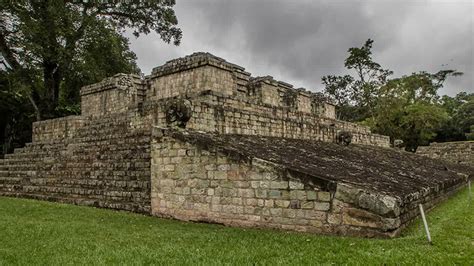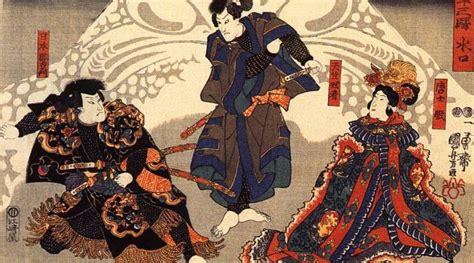Explore the rich history of Jamaica from the Pre-Columbian Era to Modern Jamaica. Learn about Spanish Colonization, British Rule, Emancipation, and Independence in this comprehensive blog post.
Pre-Columbian Era
Contents
The Pre-Columbian Era in Jamaica refers to the time before the arrival of Christopher Columbus in 1494. The island was inhabited by the Arawak and Taino indigenous peoples, who had developed a complex culture and society. They lived in villages, and their economy was based on farming, fishing, and trading. The Arawak and Taino were skilled artisans, creating beautiful pottery and crafting intricate jewelry. Their religious practices included the worship of zemis, which were spirit beings associated with natural elements.
One of the most significant archaeological sites from the Pre-Columbian Era in Jamaica is the Taino village of Seville, located in the parish of St. Ann. This site has provided valuable insight into the daily lives of the indigenous peoples, as well as their social and economic structures. The arrival of Columbus marked the beginning of a new chapter in Jamaica’s history, as the island became a focal point of European exploration and colonization.
The legacy of the Pre-Columbian Era is still evident in Jamaica today, as many place names and words in the Jamaican patois language have their origins in the Arawak and Taino languages. The rich cultural heritage of the indigenous peoples continues to be celebrated through music, dance, and art, keeping their traditions alive in the modern era.
Spanish Colonization
History of Jamaica
The Spanish colonization of Jamaica began in the year 1494 when the Spanish explorer Christopher Columbus landed on the shores of the island. At that time, the indigenous Taino people inhabited the island, and the Spanish quickly established control over the population. As a result of the colonization, the Taino population declined due to disease, forced labor, and violent conflict with the Spanish.
During the period of Spanish rule, the island was used primarily as a launching point for further exploration and conquest in the Americas. Spanish settlers established plantations and began to cultivate crops such as sugar, which eventually became a major industry in Jamaica. However, the harsh treatment of the indigenous population and the depletion of resources led to a decline in Spain’s control over the island.
In the early 17th century, Jamaica became a target for other European powers, particularly the English, who sought to expand their own colonial holdings. This eventually led to the decline of Spanish influence in Jamaica and the eventual ceding of the island to the English in 1670, under the Treaty of Madrid. The Spanish legacy in Jamaica is still evident today in the island’s culture, language, and architecture.
In conclusion, the Spanish colonization of Jamaica had a profound impact on the island’s history, leading to significant changes in the population, economy, and political landscape. The legacy of Spanish rule can still be seen in Jamaica today, providing a rich and diverse tapestry of influences that have shaped the island’s unique identity.
British Rule
British Rule in Jamaica began in 1655 when the island was captured by the British from the Spanish. The British established a colonial government and began to heavily rely on the labor of enslaved Africans to work on the plantations. The island became a significant producer of sugar, rum, and other commodities, contributing to the wealth of the British Empire.
During the period of British Rule, Jamaica was controlled by a system of plantation slavery where the enslaved population faced significant oppression and exploitation. The British implemented harsh laws to maintain control over the enslaved people and prevent any revolts or uprisings. Conditions for the enslaved population were brutal, and resistance to the British rule and slavery was widespread.
Despite the oppressive nature of British Rule, Jamaica also saw the rise of resistance movements and rebellions led by both enslaved individuals and free people of color. The Maroons, descendants of escaped slaves, waged guerilla warfare against the British and were able to negotiate semi-autonomous status in the interior of the island. These acts of resistance ultimately contributed to the downfall of the plantation system and the end of slavery in Jamaica.
British Rule in Jamaica also brought about significant changes in the island’s cultural and social landscape. The British influence can be seen in the architecture, language, and legal system of Jamaica. The legacy of British Rule is complex, as it has shaped the modern identity of Jamaica while also leaving behind a painful history of colonization and exploitation.
Emancipation and Independence
After centuries of European colonization, Jamaica finally gained its independence on August 6, 1962. This marked the end of British rule and the beginning of a new era for the island nation. The road to independence was a long and difficult one, marked by the struggle for emancipation and the fight for self-governance.
During the 19th century, the abolition of slavery in Jamaica was a major step towards emancipation. The British Parliament passed the Emancipation Act in 1833, which set the stage for the eventual freedom of all slaves in the British Empire, including Jamaica. Although this was a significant milestone, the newly freed individuals still faced many challenges as they sought to build their lives and communities.
The early 20th century saw the rise of Jamaican nationalism and calls for self-rule. Influential leaders such as Marcus Garvey and Alexander Bustamante played pivotal roles in advocating for the rights and freedoms of the Jamaican people. Their efforts eventually led to the establishment of the first political parties in Jamaica and the push for independence from British colonial rule.
Finally, after years of activism and negotiation, Jamaica achieved full independence in 1962, with the iconic moment of the Jamaican flag being hoisted for the first time as a symbol of sovereignty. The newly independent nation faced both opportunities and challenges as it navigated its path towards self-governance, but the spirit of freedom and determination continued to shape the country’s destiny.
Modern Jamaica
Modern Jamaica has been shaped by a variety of influences, including the legacy of colonialism, the struggles for independence, and the ongoing efforts at social and economic development. Today, Jamaica is a vibrant and diverse nation with a rich cultural heritage and a strong sense of national identity. Despite the challenges of poverty, crime, and political instability, the Jamaican people are resilient and continue to work towards a better future for themselves and their country.
In recent years, Jamaica has made significant strides in improving its economy and infrastructure. The tourism industry, in particular, has been a major source of growth and development, attracting millions of visitors from around the world to enjoy the island’s natural beauty and rich cultural heritage. The government has also made efforts to attract foreign investment and promote sustainable development, with a focus on renewable energy and environmental conservation.
However, Modern Jamaica still faces many challenges, including high levels of poverty and unemployment, as well as social and economic inequality. The country has also struggled with issues related to crime and violence, which have had a negative impact on both its domestic population and its international reputation. Despite these challenges, the Jamaican people remain optimistic and determined to build a brighter future for themselves and their country.
One of the most important aspects of Modern Jamaica is its vibrant and diverse culture. The island is known for its music, art, and literature, as well as its unique blend of African, European, and Caribbean influences. Jamaican culture has had a significant impact on the global stage, with the popularity of reggae music, Rastafarianism, and the Jamaican dialect all contributing to the country’s international reputation.
In conclusion, Modern Jamaica is a dynamic and evolving nation with a rich history and a promising future. Despite the challenges it faces, Jamaica continues to make progress towards social and economic development, while also celebrating its unique cultural heritage and identity. As the country moves forward, it is clear that the spirit of resilience and determination will continue to guide its path towards a brighter tomorrow.












